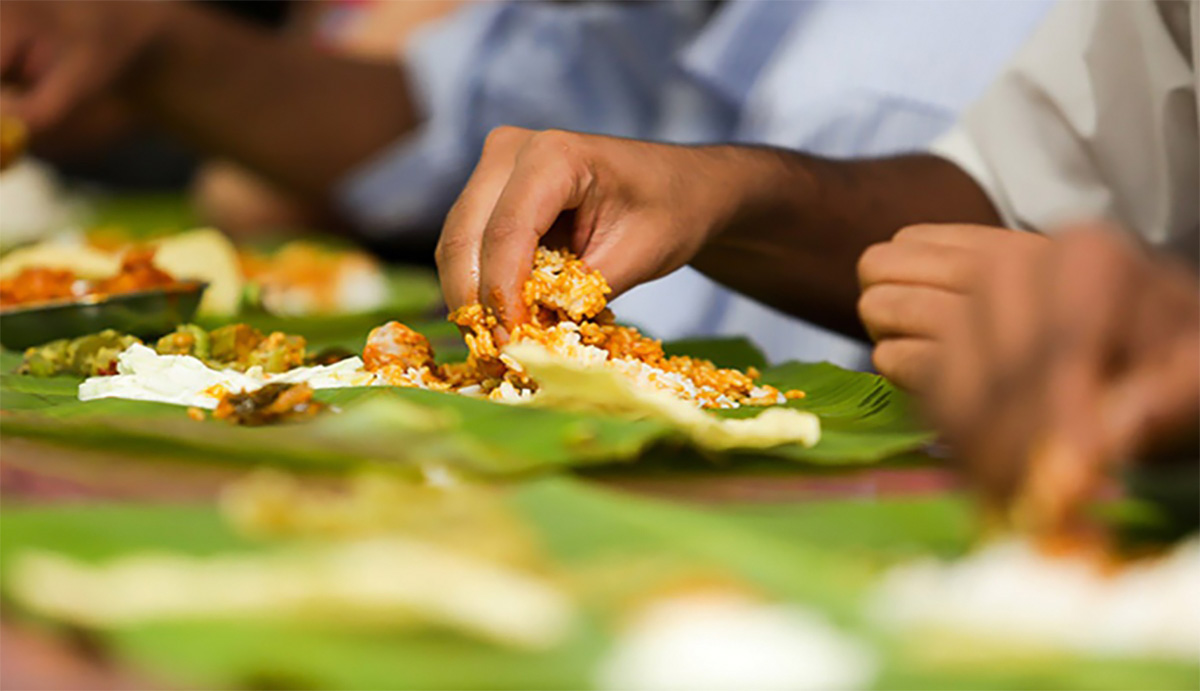
The Philippines is home to beautiful tropical beaches and raw natural beauty. But what really makes the country so endearing are the very people that live in its shores. Filipinos have a unique identity unlike any other. Their genuine hospitality is known all over the world, attracting foreigners from all corners of the globe. Their quirks, amusing traits, and bizarre qualities make them a nation that’s beloved by foreigners. So what are some of these funny Filipino traits that are equally peculiar and amusing? Let’s find out:
1. Pointing with Their Lips
Pointing with your fingers is regarded as rude and accusatory in the Philippines. Thus, when you ask them where a person, place, or object is, they typically point with their lips by pouting towards that direction. A simple pout tells you that the person or object you’re looking for is nearby. If it’s farther away, they’d most likely stand up and point to the right direction. In the video above, famous Filipino-American stand-up comedian Jo Koy demonstrates how Filipinos say “over there” through their lips.
2. Burping in Public
Burping in public after a meal is regarded by many Filipinos as a positive thing, as it signifies that you have a happy tummy. Burping is a sign that you are happy with the food that was served most especially if the meal took place in someone’s home.
3. Eating with Bare Hands
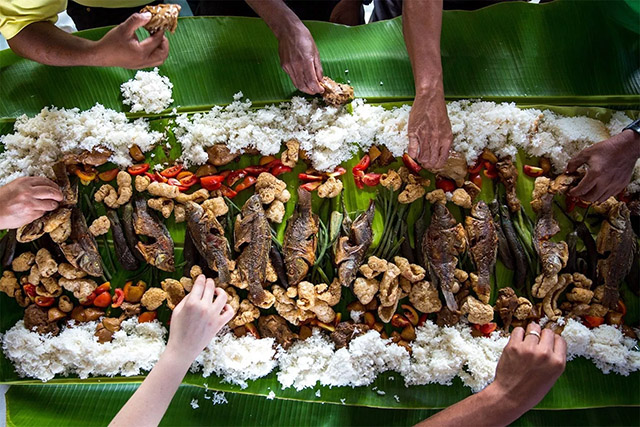
Before the Spaniards conquered the Philippines in the 16th century, natives used their hands to eat. It was only when the Spaniards arrived on Philippine land that utensils were introduced. Today, many Filipinos still eat with their bare hands, not just because it was tradition hundreds of years ago, but because many Filipino viands are best eaten sans utensils. Grilled or fried meat with rice are best eaten with bare hands.
4. Inviting Everyone to Join In When Eating
The Philippines is a food-loving nation and inviting someone to join in when eating is their simple way of being hospitable. It is considered rude to start a meal without inviting friends and family, and thus, it is polite and customary to invite people to join them when eating.
Do you wonder how much Filipinos love eating? Check out our article on the 10 Must Must-Try Filipino Dishes.
5. Having 3 to 4 Different Languages
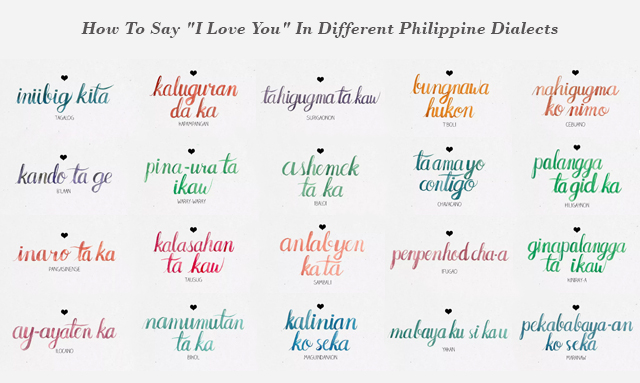
Filipinos are known to speak at least 2 languages: Tagalog and English. The latter is highly regarded in the country and used as a second language. While Tagalog is the national language, the country actually has 170 different dialects spoken by people who live in different areas. A typical Filipino can speak one dialect, Tagalog, and English, making them multilingual.
6. Spanish Words and Expressions
Because the Philippines was conquered by Spain for more than 300 years, many Spanish words and expressions are instilled in the Filipino language. Filipinos who speak Bisaya, a local dialect, use Spanish words for their numbers; and Tagalog uses Spanish words for their colors. Some Spanish words being used by Filipinos include: aparador, which means cabinet; gwapo and gwapa, which means handsome and beautiful; gitara for guitar, busina for car horn, as well as expressions such as buena mano (lucky hands), and the list goes on and on and on.
7. Christmas Season That Begins in September

Filipinos start celebrating the Christmas season in September, which officially starts what they call the “BER” months that lead to December. From September 1 until the end of January next year, you’ll hear Christmas songs playing on the radio and in malls, and Christmas decorations are absolutely everywhere. It may be due to the fact that 90% of Filipinos are Catholic and Christmas season is a celebration of the birth of Christ; or it could be their love for counting down the days to a celebration.
September 16 is exactly 100 days till Christmas and because Filipinos love to find any excuse to gather and celebrate, 100 days of Christmas is certainly a great excuse to eat, party, and be merry with friends and loved ones.
8. The Whiter, the Better
Filipinos are predominantly Malay, which means they don’t really have naturally white skin. But the national psyche has been molded through several hundred years of colonization from Spain and the United States, forming the nation’s love for everything white-skinned.
During the Spanish era, brown-skinned natives were regarded as low class citizens while the white-skinned mestizos and insulares were treated as nobility. Thus, there has always been a desire to become like the nobility, which were fairer and whiter in color. Fair-skinned individuals were also treated as high class citizens because it meant they afforded the lifestyle wherein they didn’t have to toil the land to earn a living.
9. Carbs Over Carbs Diet
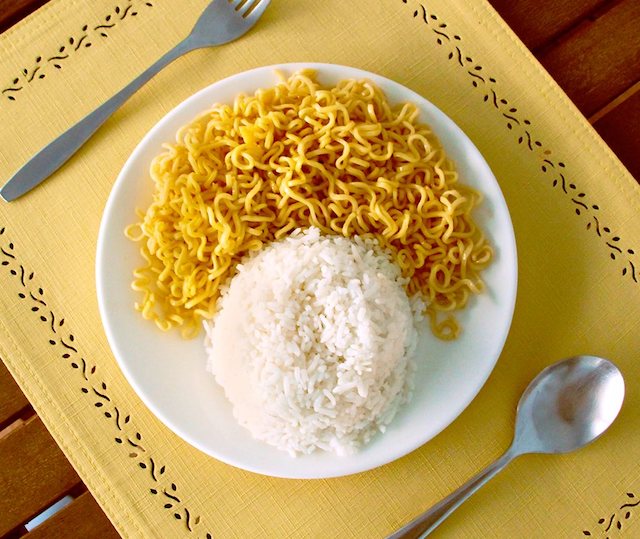
Filipinos love rice and no matter how much they eat other food staples, they never feel full without rice. The Philippines is the second largest importer of rice in the world, which means carbohydrates is a way of life in the country. It also doesn’t help that most Filipino dishes are best paired with rice, such as adobo, sinigang, and -yes, even noodles!
Filipinos also know how to eat healthy! Check out these 12 Filipino Dishes Every Health Buff Needs to Try.
10. Being Related to Every Other Person in the Area
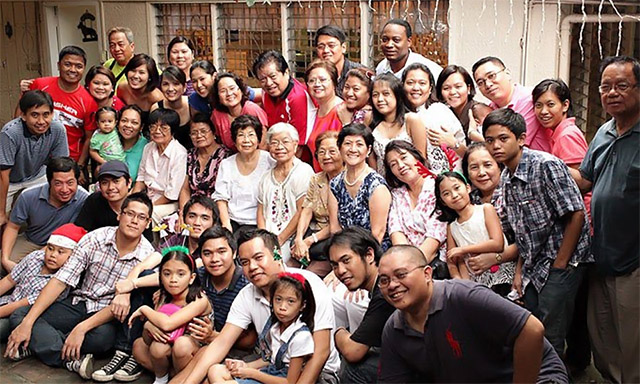
If you ever visited a home of a Filipino, you’ll realize that the next door neighbor, and the family that lives on the side of the road on the way to the home, are all related. This is because it’s very normal for Filipinos to live with extended family. This family includes grandparents, aunts, uncles, cousins, 2nd cousins, 3rd cousins, in-laws, and so on. They love being together and make it their life’s mission to support and take care of each and every member of their family, relatives included. This is why when visiting a certain area or place, you’ll find that most of the people who live there are all related to each other.
Featured Image: steemit.com




